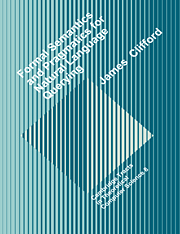8 - Summary and Conclusions
Published online by Cambridge University Press: 06 October 2009
Summary
Summary
The Historical Relational Database Model
Under the general assumption that in any scientific enterprise the development of a formal logical theory is a fruitful endeavor, we have attempted in this work to develop such formal theories for the incorporation of a temporal component into a database model, and for the specification of an English query language facility for such a database. Because of the power of the logical formalism of IL developed by Richard Montague [Mon74] we have been able to express both of these theories in terms of the same logical apparatus. Thus two areas which may have seemed only marginally related at the outset were seen to have a closer connection.
Beginning first with formalizing a historical database model, we presented the model HRDM. This model turned out to be a simple extension to an entity-relationship semantics imposed upon the relational database model. The temporal component was included in a very simple but fundamental way as a basic component of the model, and its significance from both the informal, intuitive view of three-dimensional relations extending in both directions of time, and from the formal, model-theoretic view, were discussed. In order to present as general a model of time as possible, we put only the barest of constraints upon the temporal dimension – linear order and density.
The HRDM model was seen as providing a number of insights into the nature of a database and how it functions as a model of the real world.
- Type
- Chapter
- Information
- Formal Semantics and Pragmatics for Natural Language Querying , pp. 173 - 180Publisher: Cambridge University PressPrint publication year: 1990



